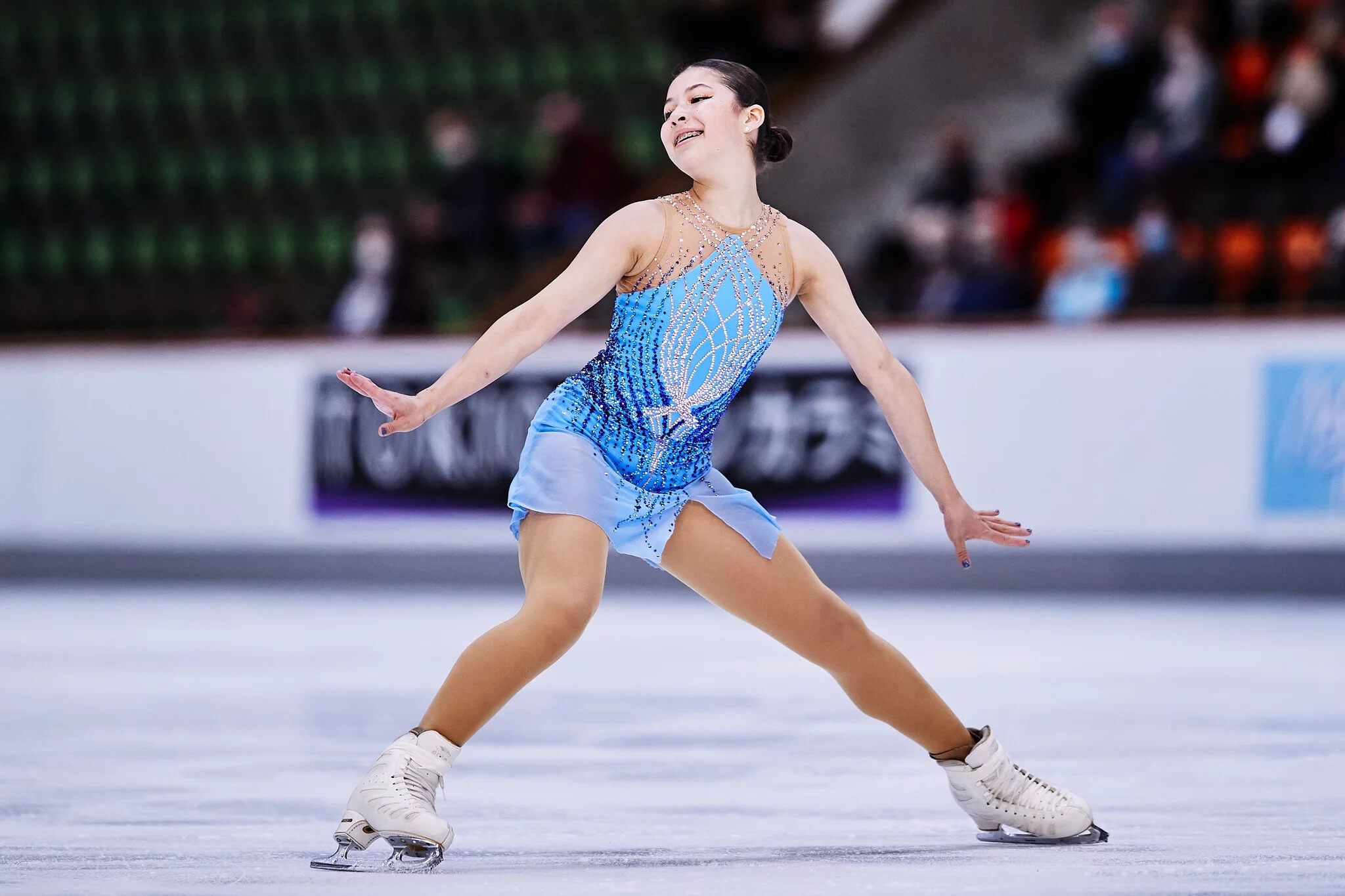
Skating is more than just a recreational activity; it's a thrilling sport that has captivated people of all ages for generations. Whether it's gliding gracefully across the ice or performing daring tricks on a skateboard, skating offers an exhilarating experience that combines athleticism, artistry, and pure adrenaline. In this article, we'll delve into 15 fascinating facts about skating that showcase its rich history, diverse forms, and enduring popularity. From the origins of ice skating to the evolution of rollerblading, we'll explore the cultural impact and technical intricacies of this dynamic sport. So, lace up your skates and get ready to embark on an exciting journey through the captivating world of skating!
Key Takeaways:
- Skating has a rich history dating back over 4,000 years, evolving from primitive bone skates to modern ice skates and skateboards, captivating people across cultures and eras.
- Skating offers numerous health benefits, fosters camaraderie, and serves as a hub for artistic expression, making it a thrilling and inclusive activity for people of all ages and skill levels.
Skating is a popular recreational activity enjoyed by people of all ages and skill levels.
Skating encompasses various disciplines, including ice skating, roller skating, and skateboarding, each with its unique characteristics and techniques. Whether gliding gracefully on ice or performing daring stunts at the skate park, skating offers a thrilling and exhilarating experience for enthusiasts worldwide.
The history of skating dates back to over 4,000 years ago.
Ancient civilizations, such as the Finns, Russians, and Scandinavians, utilized bones as primitive skates to traverse frozen lakes and rivers for transportation and leisure. Over time, skating evolved into a structured sport and recreational pastime, captivating individuals across different cultures and eras.
The first recorded pair of ice skates were found in Finland and estimated to be around 3,000 years old.
These early skates, crafted from animal bones, signify the enduring legacy of skating as a fundamental mode of winter travel and entertainment for ancient societies.
The Dutch are credited with creating the first wooden platform skates in the 13th century.
These rudimentary skates featured metal blades affixed to wooden bases, laying the foundation for the modern ice skates and revolutionizing the way people moved across icy terrain.
Roller skating gained popularity in the United States during the 1930s and 1940s.
With the emergence of roller rinks and the introduction of quad skates, roller skating became a widespread recreational activity, fostering a vibrant social scene and a sense of community among enthusiasts.
Skateboarding originated in California during the late 1940s and early 1950s.
Initially known as "sidewalk surfing," skateboarding gained momentum as a recreational pursuit and eventually evolved into a dynamic sport characterized by impressive tricks and maneuvers.
The first modern skateboard was created in the 1950s by attaching roller skate wheels to a board.
This innovative adaptation laid the groundwork for the contemporary skateboards that have become synonymous with urban culture and extreme sports.
The term "skateboarding" was coined in the 1960s, marking the formal recognition of the sport.
As skateboarding gained traction, it developed a distinct subculture, complete with its unique fashion, music, and language, reflecting the rebellious and free-spirited ethos of its participants.
Figure skating made its Olympic debut at the 1908 Summer Olympics in London.
This marked a significant milestone for the sport, propelling it into the global spotlight and solidifying its status as a revered discipline within the realm of competitive skating.
The Zamboni ice resurfacer revolutionized the ice skating experience.
Invented by Frank Zamboni in 1949, the Zamboni machine streamlined the process of resurfacing ice rinks, ensuring a smooth and pristine skating surface for athletes and recreational skaters alike.
Skating provides numerous health benefits, including improved cardiovascular fitness and enhanced muscle strength.
Engaging in skating activities promotes balance, coordination, and flexibility, contributing to overall physical well-being and mental agility.
Skating fosters a sense of camaraderie and sportsmanship among participants.
Whether in individual or team-based disciplines, skating encourages mutual support, respect, and a shared passion for the sport, creating a vibrant and inclusive community.
Skating rinks serve as social hubs and gathering places for skating enthusiasts.
These venues offer a diverse array of programs, from learn-to-skate classes to competitive events, catering to individuals of all ages and skill levels while nurturing a deep appreciation for the artistry and athleticism of skating.
Skating has inspired timeless works of art and cultural expressions.
From classic films featuring captivating ice skating sequences to iconic music and dance performances, skating has left an indelible mark on popular culture, captivating audiences and inspiring creative endeavors.
The future of skating continues to evolve with technological advancements and innovative trends.
From the integration of virtual reality in skating simulations to the exploration of eco-friendly materials in skate equipment, the world of skating embraces progress while honoring its rich heritage and enduring appeal.
Skating, in its diverse forms, transcends mere physical activity, embodying a rich tapestry of history, culture, and human expression. As individuals lace up their skates or step onto their boards, they embark on a journey that intertwines tradition with innovation, camaraderie with competition, and sheer joy with unwavering dedication. The allure of skating persists as a testament to the enduring spirit of adventure and the boundless possibilities that unfold with each glide and trick, uniting enthusiasts in a shared love for the art of skating.
Conclusion
In conclusion, skating is not just a recreational activity; it's a dynamic sport that demands skill, balance, and determination. From its origins to its evolution into various disciplines, skating has captured the hearts of millions worldwide. Whether it's the adrenaline rush of aggressive inline skating or the grace of figure skating, this activity offers something for everyone. As we've explored the facts about skating, it's evident that this sport has a rich history and continues to thrive as a beloved pastime. So, whether you're gliding across the ice or shredding at the skate park, remember that skating is more than just a hobby – it's a vibrant and enduring culture that brings people together.
FAQs
Q: Is skating a good form of exercise?
A: Yes, skating offers a fantastic full-body workout, engaging muscles and improving cardiovascular health.
Q: What safety gear is essential for skating?
A: Helmets, knee and elbow pads, wrist guards, and appropriate footwear are crucial for protecting yourself while skating.
Skating's allure captivates enthusiasts worldwide, offering thrilling experiences and countless possibilities. Whether you're eager to glide gracefully across the ice, unleash your speed on the rink, or embrace the freedom of rolling through the streets, our curated articles have you covered. From the best ice skates to unlock your potential to the enigmatic world of speed skating and the top roller skates for your adventures, these articles promise to enhance your skating journey. Join us as we explore the depths of this exhilarating sport and discover the perfect gear to elevate your skating experience to new heights.
Was this page helpful?
Our commitment to delivering trustworthy and engaging content is at the heart of what we do. Each fact on our site is contributed by real users like you, bringing a wealth of diverse insights and information. To ensure the highest standards of accuracy and reliability, our dedicated editors meticulously review each submission. This process guarantees that the facts we share are not only fascinating but also credible. Trust in our commitment to quality and authenticity as you explore and learn with us.


